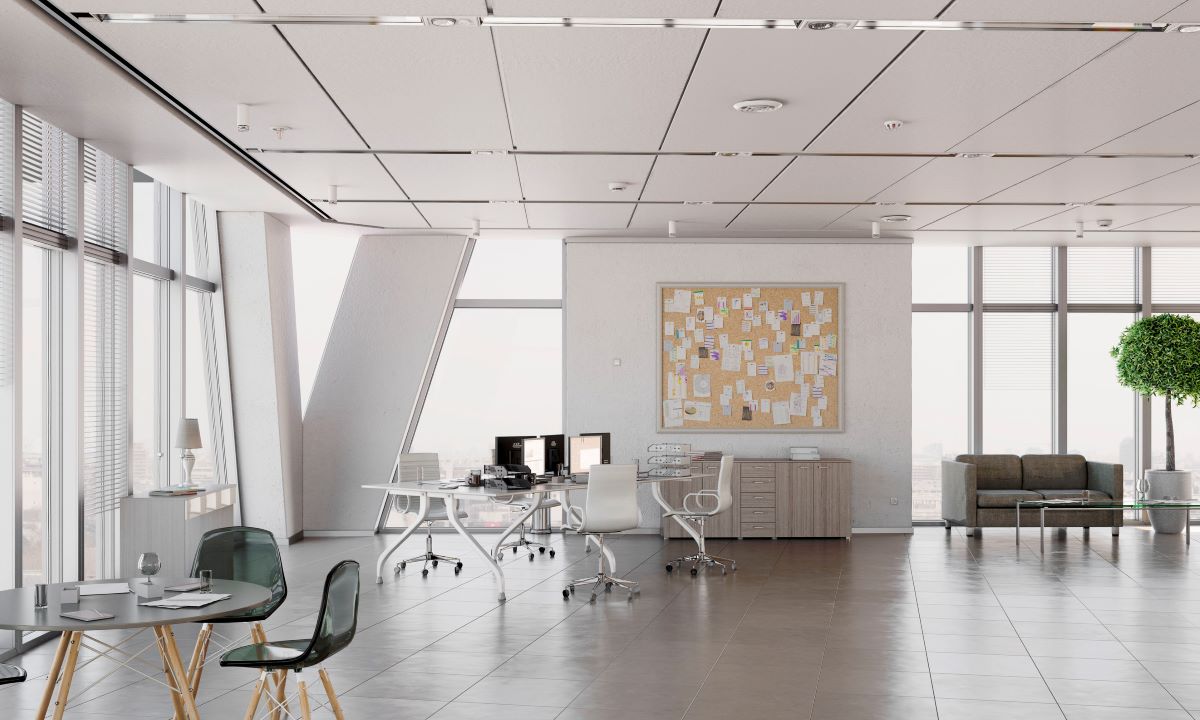Organizations increase their focus on wellness-oriented office design
An Indiana furniture manufacturer’s building renovations transformed the workplace and helped change employees’ lives.

The impact of a global pandemic has touched virtually all aspects of human interaction. The far-reaching effects have touched on how we work, and spurred new thinking about workplace safety, design and construction.
One organization that’s taking a leading role in office-space innovation is the International WELL Building Institute, which establishes standards and provides third-party verification and certification for those that adhere to rigorous design standards, operational protocols and company-wide practices.
IWBI, based in New York City, focuses on health-first factors across 10 core concepts. “One thing the pandemic has made clear is the significant role of buildings, organizations, and communities in supporting our health and safety,” says Jessica Cooper, IWBI’s chief commercial officer. “As organizations navigate the pandemic, the ROI of investing in human and social capital has become extremely clear. Businesses are now investing in health and prioritizing people-first places.”

One such business is the furniture manufacturer OFS, achieved a WELL certificate last year for its headquarters building in Huntingburg, Indiana. It achieved a WELL certification last year for its headquarters building after a recent renovation.
Even in 2017, when OFS was planning the renovation, it was already tracking wellness-focused design trends. “We foresaw it was going to increase in popularity, “says Jarod Brames, director of sustainability and WELL project lead at OFS, which specializes in sustainable office furnishings. “Our products are going into a lot of the buildings that are pursuing green certification.”
The certification also overlapped with OFS’s sustainability program, called Common Ground, which focuses on its customers, colleagues, and community. “We’re really focused on our people,” Brames says. “The way we see it, if we’re taking care of those people groups, we’re ultimately going to be creating sustainable products and operating in a sustainable manner.”
The project
OFS’s 49,000-square-foot building, built in 2005, is occupied by 200 workers. Much of the original design focused on energy efficiency, including a state-of-the-art HVAC system. It featured large skylights to let in natural light, an onsite fitness center (including a lap pool and saunas), and large open-area workspaces. “We knew going into it that the building was going to hit on what WELL was going to require of us,” Brames adds.

The effort helped reduce the final costs of the renovation because OFS already met several benchmarks. All total, the benchmarks involved meeting standards in air, water, nourishment, light, movement, thermal comfort, sound, mind, and community.
The renovation construction began in 2018. But to meet the remaining WELL standards, adjustments had to be made, including adding equipment that increased ventilation rates. The addition increased energy consumption but allowed for cleaner air. OFS also added filters to eliminate microbial growth.
Other alterations included:
- Sit-to-stand desking
- Ergonomic seating
- “Tambient” lighting, where the lighting is attached to the furniture and close to work surfaces.
- A live wall, with living plants.
OFS also focused on nutrition and community with a redesign of its eating areas. Its Roots Café became a social hub. Individual department breakrooms became a single, centrally-located cafeteria. Now workers can congregate, branch out to meet new people, and collaborate. The café also features more nutritious food, with a focus on minimal sugar and artificial flavorings. Vending machines were removed to cut down on junk food.

Having a WELL-certified building placed OFS in a strong position when COVID-19 hit last year. The company went remote in the spring, but by August it was at 85% occupancy with flexible work schedules and safe spacing.
With the right air filters and cleaning standards already in place, its office building was better prepared to meet its employees’ needs when they returned to work. Brames says the design, and the certification, helped with reassuring workers they could return safely.
OFS assessed the impact of the changes on employees and their families with an occupancy survey. Employees reported they had begun eating healthier and moving more, not only in the office but outside of it as well.
What does well mean?
Industry standards vary, but in general, a wellbeing-focused building aims to deliver on all areas of physical and mental health and environmental concerns. Even small steps, like offering healthier eating options, can impact behavior. Spaces arranged to allow more movement, lighting to address eye strain, or quiet areas to help with burnout are typical changes.
“For a focus on what interventions can be done immediately to support human health, we look to the WELL features that help nudge people towards making choices that support their well- being,” says IWBI’s Cooper. “In other words, start by making the healthy choice the easy choice!”

Case studies from the first WELL projects show positive results, from employee behavior to increased savings, according to IWBI. The British engineering company Cundall, for example, saved $281,000 in reduced sick days per year after it improved its indoor air quality. The American Society of Interior Designers saw a 19% drop in absenteeism when it redesigned its headquarters to improve air quality, employee satisfaction, and productivity.
Green tech (like integrated building management and IoT technologies) and the pursuit of new industry standards for wellness design are one way to increase employees’ health, even when they don’t directly engage with a wellness program.
“WELL buildings provide important health benefits to everyone in the space 100% of the time,” says Cooper.
Part of our collection of Top Reads of 2021.

